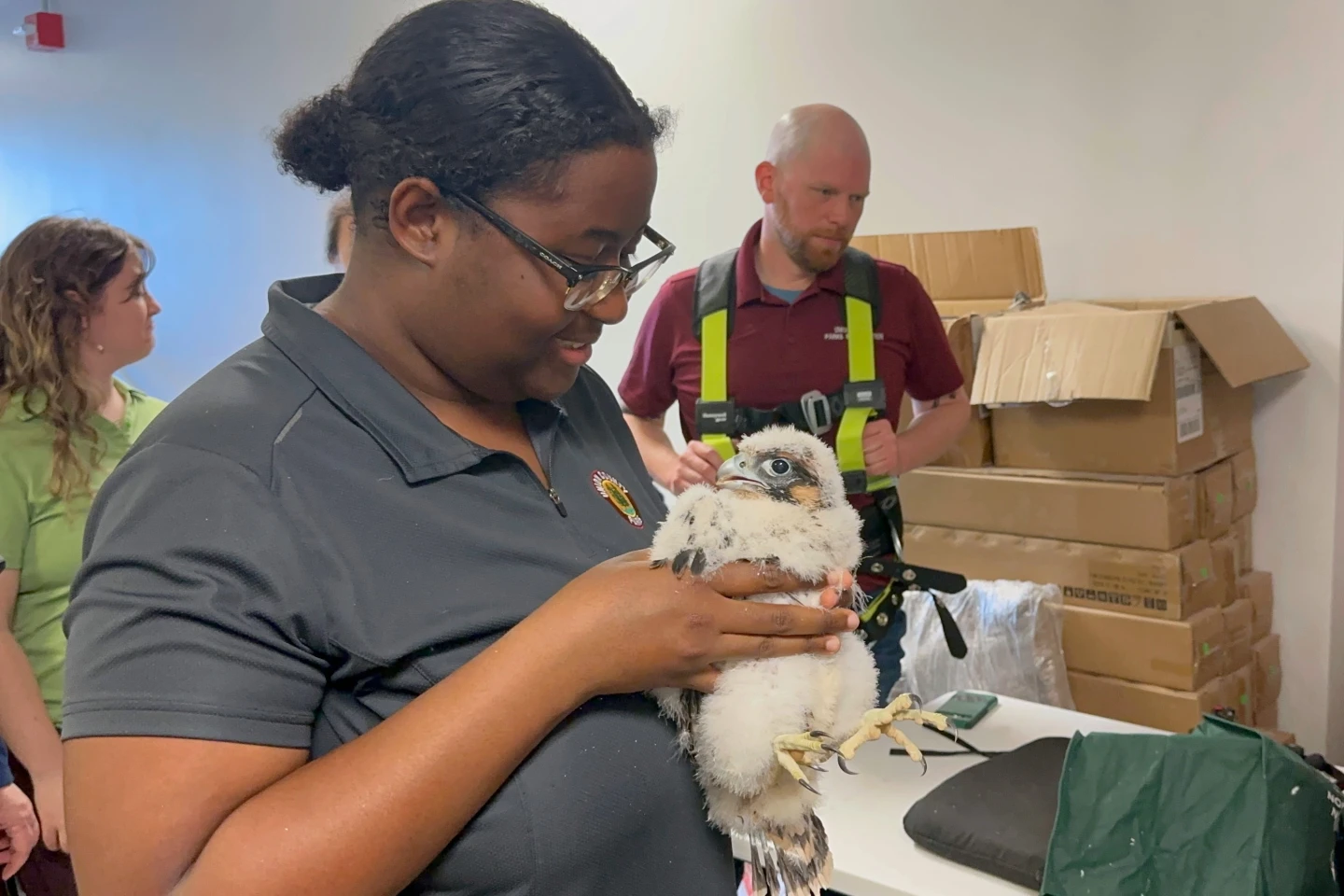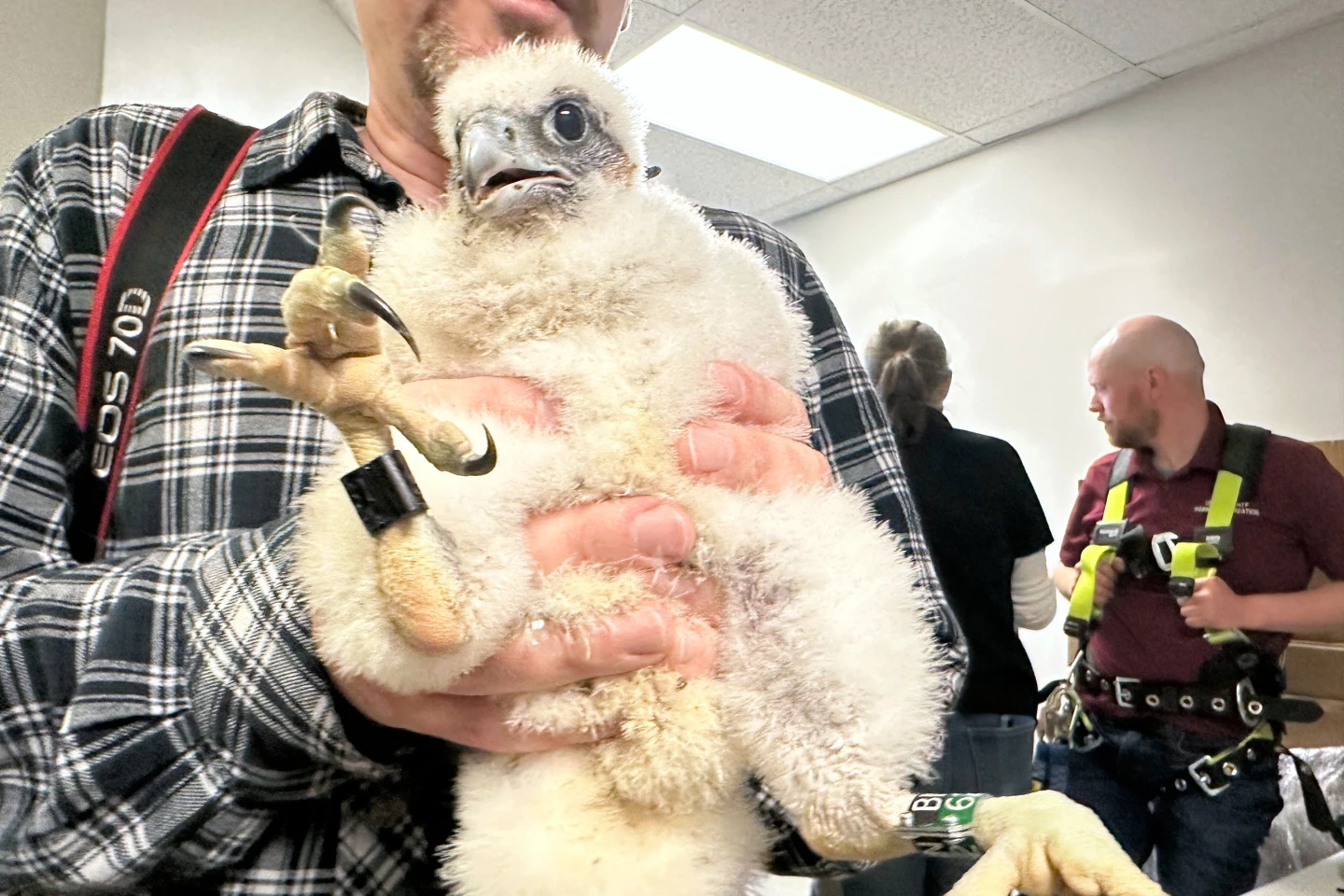After increasing in recent decades thanks to conservation work, the number of peregrine falcons in the U.S.—once in danger—has started to fall again in some areas because of bird flu, which has affected many other bird populations lately.
Falcons living along the coast have been hit hard, but scientists say those living in some of the country’s largest cities seem to be doing well. This shows that the world’s fastest bird has adjusted to living near people. Many people enjoy watching these falcons through webcams every spring as the baby birds grow and eventually leave the nest.
“Wildlife can really adapt to these harsh urban environments,” said Christopher Nadareski, a research scientist with the New York City Department of Environmental Protection. “That’s the key here, is that despite these harsh living conditions for them, they still find ways to survive.”
Changes in their numbers
Peregrines are skilled hunters that eat other birds. They have large eyes and bright yellow feet with very sharp claws. They fly very high and then dive fast to catch their prey, sometimes reaching speeds over 200 mph (322 kph).
Their numbers went down because of a pesticide called DDT, which entered the food chain and made their eggshells weak, causing many eggs not to hatch. By the 1960s, peregrines disappeared from the eastern half of the U.S.
In 1972, DDT was banned, and conservationists worked to bring the birds back from near extinction. They were removed from the federal endangered species list in 1999. For example, in New Jersey, nesting pairs went from fewer than five in 1980 to almost 45 by 2021.
However, their numbers started to fall again because of the bird flu outbreak.
The decline has been especially bad among coastal peregrines, which hunt ducks, geese, and other water birds that gather in large groups, making it easier for disease to spread, explained Kathy Clark, head of New Jersey’s Endangered and Nongame Species Program. Bird flu is thought to have caused many coastal New Jersey nests to be empty, but scientists have only been able to find some of the dead falcons. Many of those tested positive for the disease.
Coastal peregrines in states like California and Virginia have also dropped in numbers, with bird flu believed to be the cause. But it’s not all bad news, since Angelena Ross, a wildlife biologist with the New York Department of Conservation, said enough young birds are moving into coastal areas to help bring the population back up.
Moving into cities
Peregrines nesting in big cities among buildings and bridges seem to have avoided the worst of the bird flu that has hit their coastal relatives.
City falcons, which eat birds like pigeons and songbirds, have not experienced the same drops, Clark said. They have successfully made buildings and bridges part of their natural habitat, which normally includes places like the Delaware Water Gap and the Palisades near New York on the New Jersey side of the Hudson River.

Some have even made homes on the busy George Washington Bridge, where scientists recently put tracking anklets on chicks. New York state officials estimate that New York City has the largest group of urban peregrines.
“We’re starting to see increases in success so that in New York City, we are at the point where we’re probably the most concentrated, populated peregrine falcon nesting in the whole world at this point. We have about 30 nesting pairs,” Nadareski said.
A sign of hope
The bird’s popularity has grown, partly because it is the world’s fastest, with thousands watching live streams of peregrines across the country.
With some quiet times between exciting moments—like when a woodpecker gets attacked or a blue jay loses a fight—the baby falcons start copying their parents, flapping wings and grabbing nest pieces with their claws around May.
May is also when biologists on the East Coast put bands on the birds to track them.
In New Jersey, Wurst and Clark recently climbed onto the roof of the Union County Courthouse in Elizabeth to catch four young chicks for banding while their parents swooped at them, using feather dusters to keep the scientists away.
“Some individuals are more aggressive than others,” said Ben Wurst, a biologist with the Conserve Wildlife Foundation of New Jersey, during the chick banding in Elizabeth. “Normally they just kind of bonk you.”
The scientists put the young birds in canvas bags to take them off the roof for a checkup and to attach bracelets with individual numbers so they can be tracked. The group had three female and one male chick, Clark said.
“These birds are going to be the ones to repopulate — hopefully,” Clark said. “It’s a great symbol of hope.”


